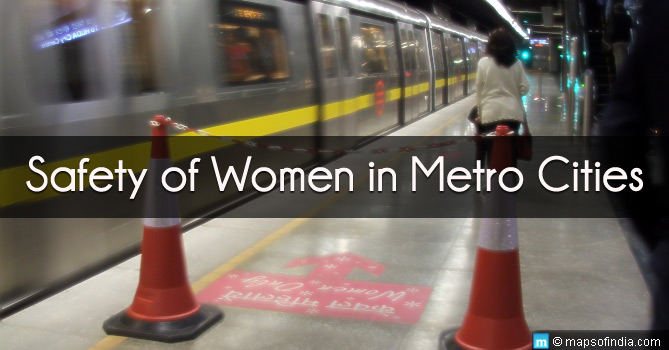Since every coin has two sides, living in Indian metropolitan cities comes with its own advantages and disadvantages. Though metropolis provides feasibility to remote corners of the city. However, it is quite challenging to reach safely at your destination. Challenges faced by people living in Indian metropolitan cities are innumerable.
Not only during the night but people are unsafe even during the day. There have been innumerable instances where people’s safety was threatened during the day and nobody came to their rescue. With rampant industrialization and urbanization, not only are metropolitan cities climbing on the growth ladder but this modernity has rendered humans bereft of humanity. During the contemporary times, be it man, woman, children, senior citizens, to name a few, nobody is safe. Safety in metropolitan cities is like a dream. The negligent behavior of authorities adds to the woes of safety measures.
Since time immemorial women have been subjugated. Recent incidents of eve-teasing, rape, acid-attacks on women have conglomerated to increase the concern of their respective families. Considered to be the crime capital of India, the safety of women is vulnerable in Delhi. The basic root of crime against women is sick mentality wherein a woman is made a victim of chauvinism. Be it during the day or night, in home or out, walking or in public transit, women are unsafe and innumerable factors contribute in making them vulnerable. Public security and safety play a pivotal role in the lives of people. It is significant for the economic prosperity and quality of life for the citizens. Safety measures must be looked into and enhanced. Safety is a basic right of the citizens of the world’s largest democracy.
As per the survey conducted by IDFC Institute, titled Safety Trends and Reporting of Crime (SATARC), approx 87% households in Delhi worries if women are out alone beyond 9 PM. A survey of 20,597 households across Bengaluru, Chennai, Delhi and Mumbai was conducted by the IDFC Institute. According to the survey, 87% of households in Delhi worry if a female member of the house is out beyond 9 PM. However, at the same time of night, the percentages for other cities is relatively low- for 54% for Bengaluru, 48% for Chennai, and 30% for Mumbai. Four questions pertaining to the following were asked- incidence of crime, reporting to police, opinions on police, and safety perceptions. Pertaining to the safety measures for women during the night, the entertainment and commercial capital of India, Mumbai worries less if a female member is out of the house beyond 9 PM. However, Chennai considered being safe by both men and women. Statistics reveal a bigger picture. This survey does not limit itself to women only but transcends to men as well.
The Safety Trends and Reporting of Crime (SATARC) shed light at households’ perception of safety along with behavioral changes they may have adopted to keep themselves safe in the four cities-Bengaluru, Chennai, Delhi, and Mumbai. According to IDFC Institutes’ Safety Trends and Reporting of Crime (SATARC), the percentage of households of men begin worrying if they are out alone beyond 11 pm in Delhi is 95%, 83% in Bengaluru, 84% in Chennai and 60% in Mumbai.






